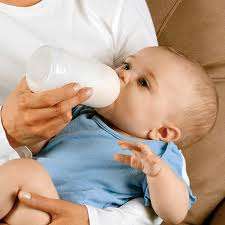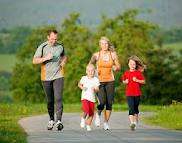A Child Care Provider’s Guide to Safe Sleep

Did you know?
• About one in five sudden infant syndrome (SIDS) deaths occur while an infant is being cared for by someone other than a parent. Many of these deaths occur when infants who are used to sleeping on their backs at home are then placed to sleep on their tummies by another caregiver. We call this “unaccustomed tummy sleeping.”
• Unaccustomed tummy sleeping increases the risk of SIDS. Babies who are used to sleeping on their backs and placed to sleep on their tummies are 18 times more likely to die from SIDS.
Who is at risk for SIDS?
• SIDS is the leading cause of death for infants between 1 month and 12 months of age.
• SIDS is most common among infants that are 2-4 months old. However, babies can die of SIDS until they are 1 year old.
Because we don’t know what causes SIDS, safe sleep practices should be used to reduce the risk of SIDS in every infant under the age of 1 year.
Know the truth…
SIDS is not caused by:
• Immunizations
• Vomiting or choking
What can child care providers do?
Follow these guidelines to help protect the infants in your care:
Create a Safe Sleep Policy
Create and use a written safe sleep policy–Reducing the Risk of Sudden Infant Death Syndrome, Applicable Standards from Caring for Our Children National Health and Safety Performance Standards: Guidelines for Out-of-Home Child Care Programs outlines safe sleep policy guidelines.
A Safe Sleep Policy Should Include the Following:
• Healthy babies should always sleep on their backs. Because babies sleeping on their sides are more likely to accidently roll onto their stomach, the side position is not as safe as the back and is not recommended.
• Require a physician’s note for non-back sleepers that explains why the baby should not use a back-sleeping position, how the child should be placed to sleep, and a time frame that the instructions are to be followed.
• Use safety-approved cribs and firm mattresses (cradles and bassinets may be used, but choose those that are JPMA (Juvenile Products Manufacturers Association) certified for safety).
• Keep cribs free of toys, stuffed animals, and extra bedding.
• If a blanket is used, place the child’s feet to the foot of the crib and tuck in a light blanket along the sides and foot of the mattress. The blanket should not come up higher than the infant’s chest. Sleep clothing, such as sleepers, sleep sacks, and wearable blankets, are good alternatives to blankets.
• Sleep only 1 baby per crib.
• Keep the room at a temperature that is comfortable for a lightly clothed adult.
• Do not use wedges or infant positioners, since there’s no evidence that they reduce the risk of SIDS.
• Never allow smoking in a room where babies sleep, as exposure to smoke is linked to an increased risk of SIDS.
• Have supervised “tummy time” for babies who are awake. This will help babies strengthen their muscles and develop normally.
• Teach all staff, substitutes, and volunteers about safe sleep policies and practices and be sure to review these practices often.
When a new baby is coming into the program, be sure to talk to the parents about your safe sleep policy and how their baby sleeps. If the baby sleeps in a way other than on her back, the child’s parents or guardians need a note from the child’s physician that explains how she should sleep, the medical reason for this position and a time frame for this position. This note should be kept on file and all staff, including substitutes and volunteers, should be informed of this special situation. It is also a good idea to put a sign on the baby’s crib.
If you are not sure of how to create a safe sleep policy, work with a child care health consultant to create a policy that fits your child care center or home.
Safe Sleep Practices
• Practice SIDS reduction in your program by using the Caring for Our Children standards.
• Always place babies to sleep on their backs during naps and at nighttime.
• Don’t cover the heads of babies with a blanket or overbundle them in clothing and blankets.
• Avoid letting the baby get too hot. The infant could be too hot if you notice sweating, damp hair, flushed cheeks, heat rash, and/or rapid breathing. Dress the baby lightly for sleep. Set the room temperature in a range that is comfortable for a lightly clothed adult.
• Talk with families about the importance of sleep positioning, and encourage them to follow these guidelines at home.
Safe Sleep Environment
• Place babies to sleep only in a safety-approved crib with a firm mattress and a well-fitting sheet. Don’t place babies to sleep on chairs, sofas, waterbeds, or cushions. Adult beds are NOT safe places for babies to sleep.
• Toys and other soft bedding, including fluffy blankets, comforters, pillows, stuffed animals, and wedges should not be placed in the crib with the baby. These items can impair the infant’s ability to breathe if they cover his face.
• The crib should be placed in an area that is always smoke-free.
Other Recomendations
• Support parents who want to breastfeed or feed their children breast milk.
• Talk with a child care health consultant about health and safety in child care.
• Have a plan to respond if there is an infant medical emergency.
• Be aware of bereavement/grief resources.
Am I a Child Care Provider?
Some child care providers are professionals with college degrees and years of experience, but other kinds of child care providers could be grandparents, babysitters, family friends, or anyone who cares for a baby. These guidelines apply to any kind of child care provider. If you ever care for a child who is less than 12 months of age, you should be aware of and follow these safe sleep practices.







